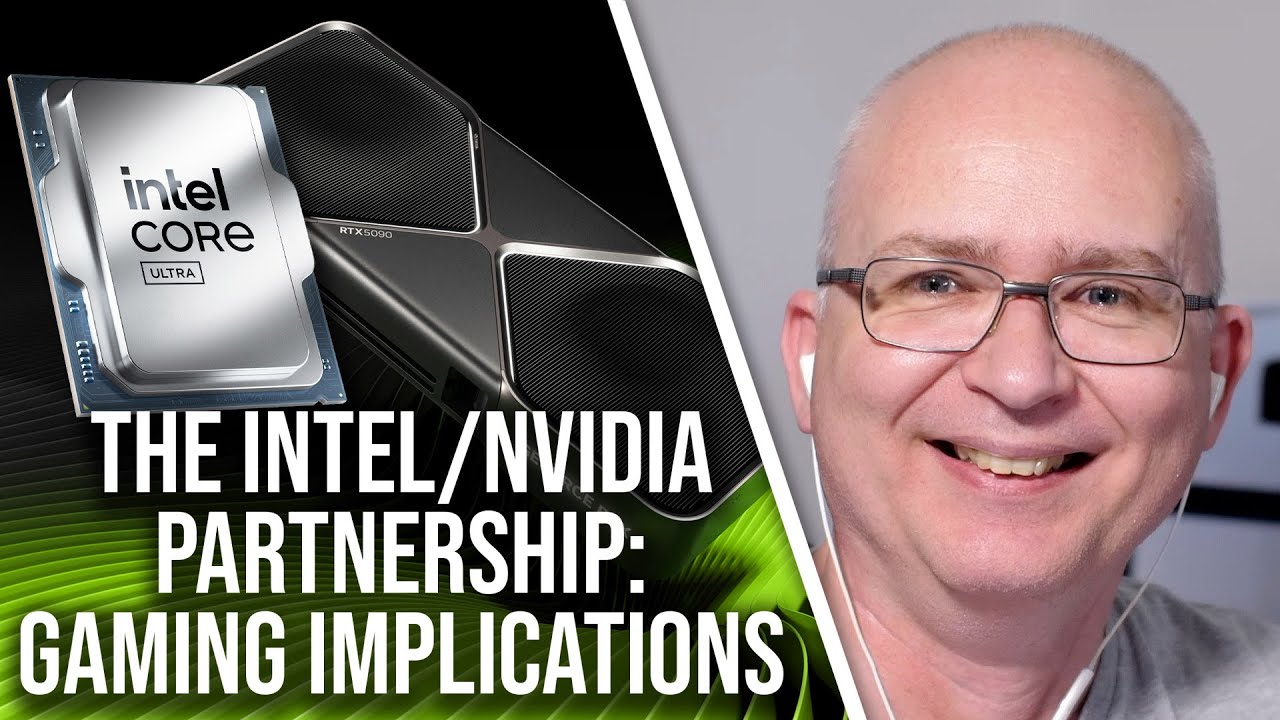Nvidia’s acquisition of a 4% stake in Intel marks a strategic partnership aimed at integrating Nvidia’s GPU technology with Intel’s x86 CPUs, potentially revolutionizing gaming and computing with more efficient, powerful, and integrated chips over the long term. While initial efforts will focus on enterprise and data centers, this collaboration could eventually lead to innovative consumer products, reshaping the competitive landscape against AMD and enhancing performance and compatibility in gaming hardware.
The recent announcement of a collaboration between Nvidia and Intel marks a significant development in the semiconductor industry, with Nvidia acquiring a roughly 4% stake in Intel by purchasing about 215 million shares. This partnership comes at a time when Intel is facing challenges, and it follows shortly after the US government’s acquisition of a 10% stake in Intel. The deal has already caused a positive reaction in Intel’s stock prices and hints at the potential for innovative products in the future, particularly those combining Intel’s x86 CPU chiplets with Nvidia’s RTX graphics chiplets. However, these products are expected to take time to materialize, signaling a long-term collaboration focused initially on enterprise and data center markets, with eventual consumer-level applications.
From Nvidia’s perspective, this partnership addresses a longstanding limitation: the lack of an x86 license, which has prevented them from entering the CPU space traditionally dominated by Intel and AMD. By collaborating with Intel, Nvidia can now integrate its GPU technology with Intel’s x86 architecture, opening new opportunities in markets where x86 remains dominant. This integration could lead to more efficient and powerful system-on-chip (SoC) designs that combine CPU and GPU capabilities on a single chip, improving power efficiency and performance. For gaming and mobile devices, this could mean new form factors like laptops and handheld consoles that avoid the complications of separate CPU and GPU components, potentially solving issues like Nvidia’s Optimus technology struggles.
In the near term, Nvidia is also developing ARM-based SoCs, such as the GB10 processor, which combines ARM CPU cores with RTX-class graphics. However, the success of these ARM-based products in gaming hinges on the effectiveness of Windows’ ARM translation layer, which remains uncertain. While these ARM products represent an important step for Nvidia, the real game-changer could be the future Intel x86-based chips enhanced with Nvidia graphics, which would offer more seamless compatibility with existing software and games. Meanwhile, this partnership may also impact Intel’s internal GPU efforts, such as their ARC graphics line, potentially reducing the need for Intel to develop its own graphics architecture independently.
The collaboration also raises questions about the competitive landscape, particularly concerning AMD, which has been a strong competitor in both CPUs and GPUs. Intel’s new alliance with Nvidia could shift dynamics in data centers and gaming markets, providing Intel with renewed strength and Nvidia with a broader platform to deploy its technologies. However, the partnership is not a merger or acquisition; rather, it is a strategic collaboration with complex licensing and economic considerations, especially given the existing cross-licensing agreements between Intel and AMD for x86 technology. Therefore, Nvidia’s role will likely be as a partner providing GPU technology integrated into Intel’s CPU products rather than independently producing x86 processors.
Overall, this unexpected partnership opens exciting possibilities for the future of computing and gaming hardware. It promises the creation of innovative products that blend Intel’s CPU expertise with Nvidia’s leading GPU technology, potentially revolutionizing mobile and gaming devices with more efficient, powerful, and integrated chips. While the full impact will take years to unfold due to the lengthy development cycles in semiconductor manufacturing, the collaboration signals a strategic shift that could reshape the competitive landscape and drive new advancements in both enterprise and consumer computing markets.
